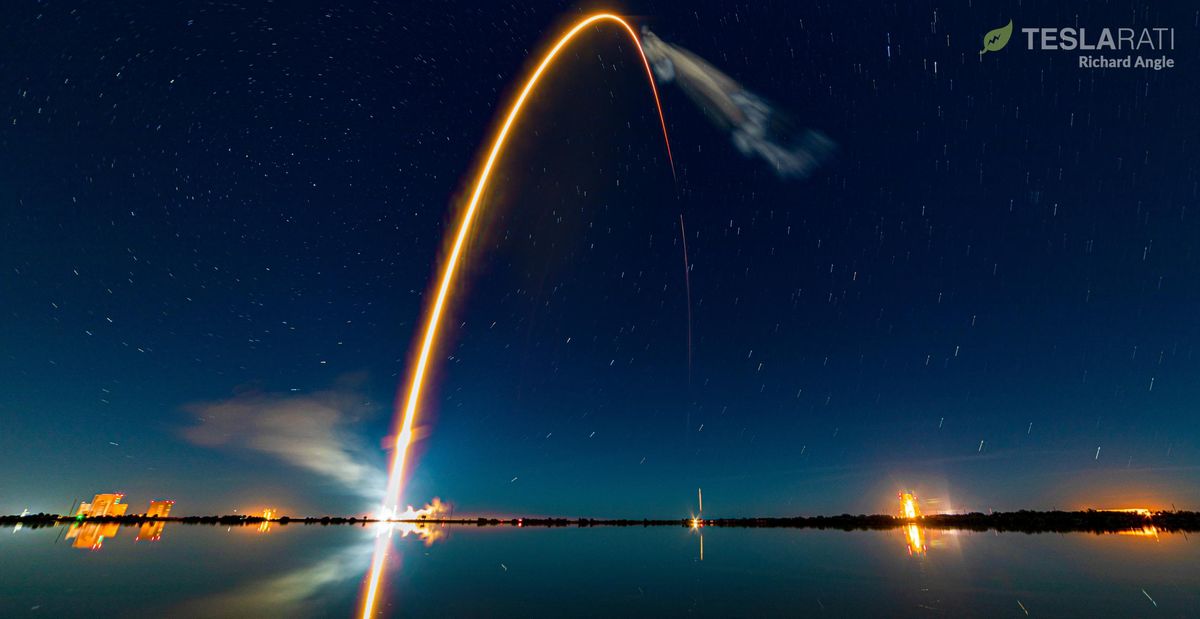SpaceX launches 60 more Spacelink satellites

A few minutes every morning is all you need.
Stay up to date on the world's Headlines and Human Stories. It's fun, it's factual, it's fluff-free.
The American aerospace company SpaceX launched 60 new satellites into space on January 6, bringing the total number of spacecraft the firm has orbiting the earth to 182.
SpaceX is sending satellites into space as part of its Starlink satellite constellation project.
Through this technology, the company aims to provide broadband internet connectivity to rural and urban areas throughout the world. SpaceX also plans to sell some of its satellites for military and scientific purposes, according to reports. In 2018, the firm estimated the total cost of the decade-long project to be about US $10 billion.
The launch
A SpaceX Falcon 9 rocket launched from Cape Canaveral Air Force Station in Florida carried the 60 satellites into space. The launch was a success, with flight controllers applauding and the launch commentator describing the spectacle as “awesome."
The rocket sent the satellites into orbit about 180 miles above the earth. About an hour after the launch, all 60 satellites broke away from the Falcon 9 rocket and traveled independently further into space.
The Spacelink satellites launched from Florida on January 6 join more than 100 SpaceX satellites sent previously into space by the company.
With the addition of 60 spacecraft, SpaceX now has more commercial satellites in orbit than any other company.
According to reports, SpaceX plans a further 23 launches this year, two of which could happen by the end of this month, with the company having permission from aerospace regulators to launch up to 12,000 satellites.
SpaceX is not the only company developing satellite systems. Amazon and OneWeb, backed by the Japanese firm Softbank, are also building satellite constellations.
Astronomers concerned
Unlike previous launches, the January 6 batch of satellites had a coating intended to help them blend into the night sky. SpaceX made the satellites darker in response to complaints from astronomers.
Following SpaceX launches in May and November 2019, astronomers said the satellites were too bright and were hampering their observations of the cosmos. Not only are the satellites bright, but experts say the speed at which they move leaves trails of pollution that obscures stargazing.
Further criticism from the astronomy community claims that Starlink satellites will eventually outnumber visible stars. With the satellites able to automatically change course, astronomers argue they can’t schedule observations that are certain to avoid them.
Such is the concern over the impact of the SpaceX project on science that both the International Astronomical Union and the National Radio Astronomy Observatory released official statements expressing concern about the matter.
International space agencies have also had issues with the SpaceX constellation. In September 2019, the European Space Agency (ESA) revealed that it needed to alter the trajectory of one of its satellites after it almost collided with a Space X craft. The change in direction was the “first time ever” the ESA had acted to avoid another active spacecraft.
SpaceX has acknowledged some of the astronomer’s concerns. SpaceX concedes that the satellites are bright immediately after launch but claim that the spacecraft should be barely visible when they reach their final orbit. The aerospace firm also says they will provide information to astronomers about the location of Starlink satellites so observers can plan to avoid interference.
Have a tip or story? Get in touch with our reporters at tips@themilsource.com




Comments ()